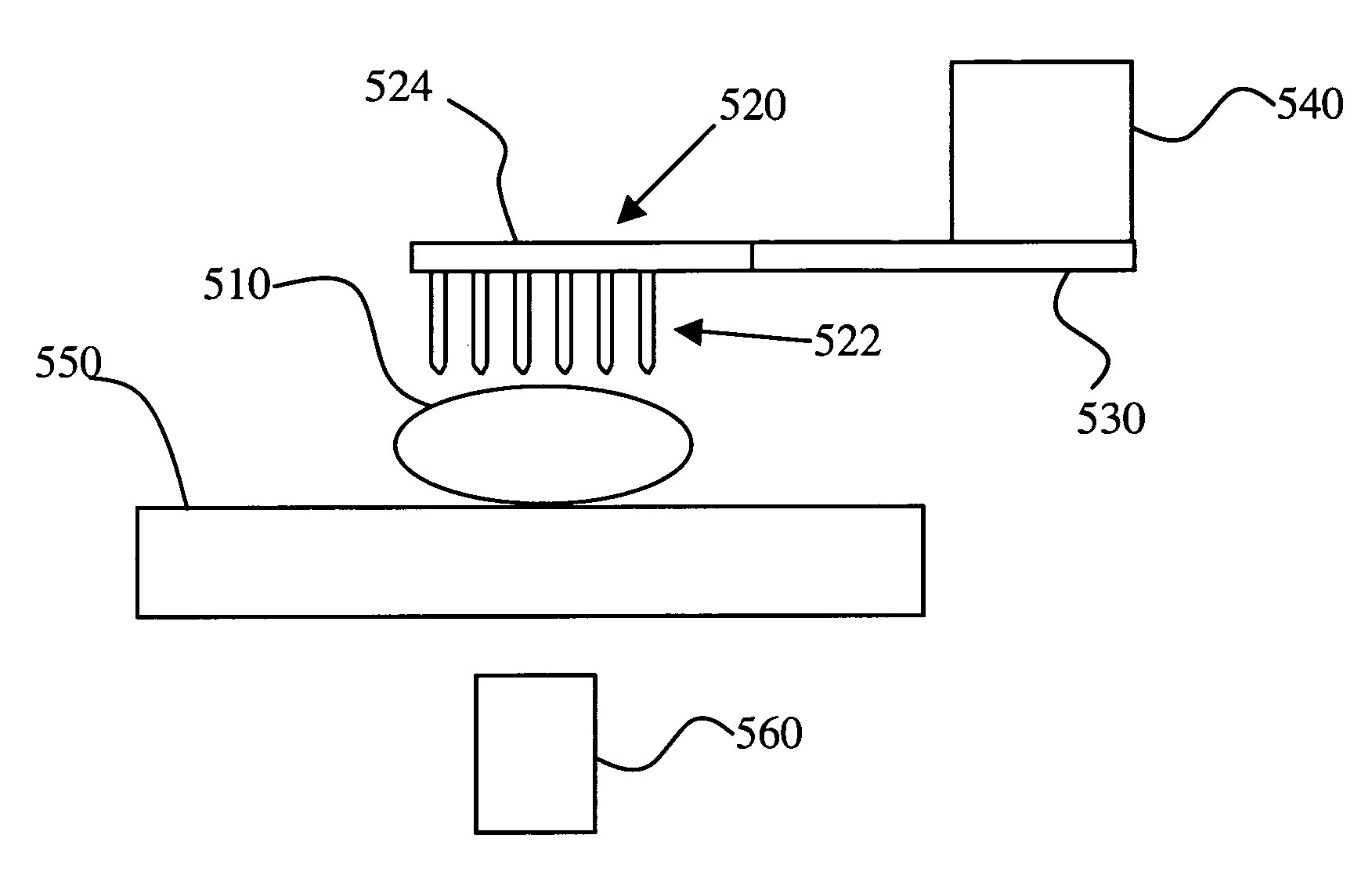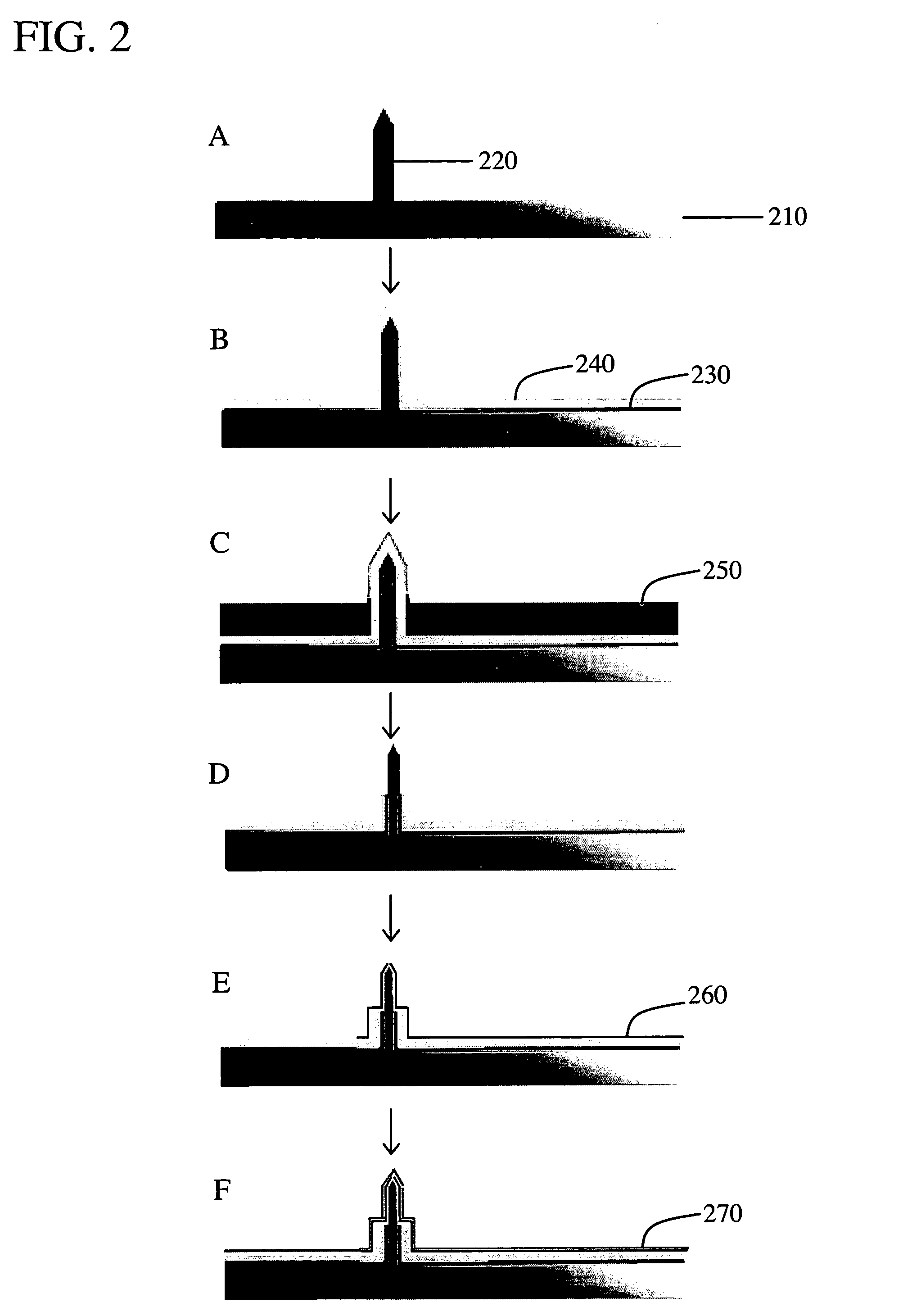Sensors for electrochemical, electrical or topographical analysis
a topographical analysis and electrochemical technology, applied in the field of scanning electrochemical microscopy, can solve the problems of low afm resolution, mechanical instability of the tip during afm analysis, and rare probe type used in secm studies
- Summary
- Abstract
- Description
- Claims
- Application Information
AI Technical Summary
Benefits of technology
Problems solved by technology
Method used
Image
Examples
examples
[0050] EXAMPLES
[0051] Electrochemical response of the sensor
[0052] Cyclic voltammetry was applied to investigate the electrochemical behavior of the sensors. Sodium hydrogenphosphate (99%) and dihydrogenphosphate, potassium chloride (99%, a.c.s. reagent), hexammineruhtenium(III)chloride (99%), silver wire (0.5 mm diameter, 99.9%) and platinum wire (0.5 mm diameter, 99.99%) were all purchased from Sigma Aldrich and used as received. All solutions were prepared with deionized water (HPLC reagent) supplied from J. T. Baker. Electrochemical measurements were carried out using a Solatron 1287, an electrochemical interface, in combination with a Solatron 1260, Impedance / Gain Phase Analyzer (Solatron Analytical, UK). A three-electrode arrangement was employed. The sensor was mounted on a micromanipulator stage PCS-6000 (Burleigh Instruments, NY) This way, the probes on the cantilever could be immersed in a drop or film of electrolyte in a controlled fashion. A Pt thin film layer was used ...
PUM
 Login to View More
Login to View More Abstract
Description
Claims
Application Information
 Login to View More
Login to View More - R&D
- Intellectual Property
- Life Sciences
- Materials
- Tech Scout
- Unparalleled Data Quality
- Higher Quality Content
- 60% Fewer Hallucinations
Browse by: Latest US Patents, China's latest patents, Technical Efficacy Thesaurus, Application Domain, Technology Topic, Popular Technical Reports.
© 2025 PatSnap. All rights reserved.Legal|Privacy policy|Modern Slavery Act Transparency Statement|Sitemap|About US| Contact US: help@patsnap.com



